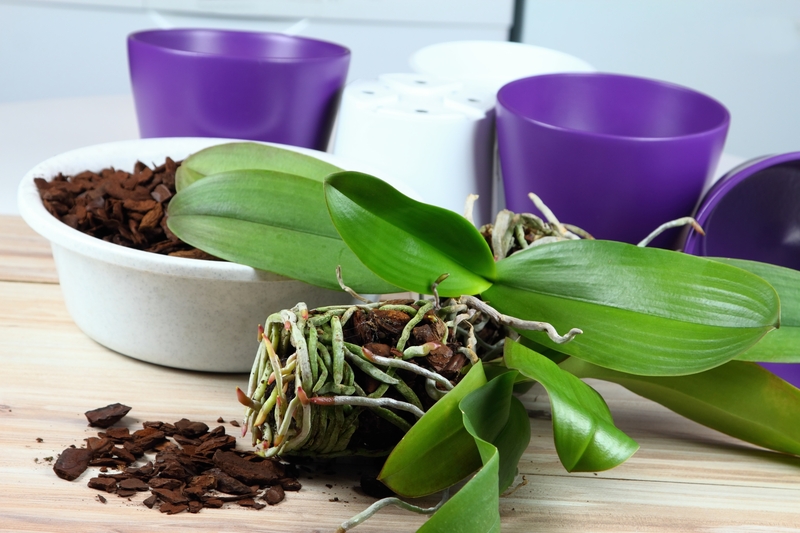3 Proven Techniques for Controlling Weeds Naturally
Posted on 08/06/2025
3 Proven Techniques for Controlling Weeds Naturally
If you're a gardener or homeowner, you know the ongoing battle with weeds can be frustrating. These invasive plants compete for nutrients, water, and sunlight, often hampering the growth of your beloved flowers, vegetables, or lawn. Yet, many people wish to avoid harmful chemicals and pesticides. The good news is that natural weed control methods can be highly effective when applied correctly. In this comprehensive guide, we'll explore three proven techniques for controlling weeds naturally, sharing practical tips and expert advice for a healthier, thriving garden.

Why Opt for Natural Weed Control?
Synthetic herbicides may offer quick results, but they can negatively impact soil health, water sources, pets, and pollinators. By switching to organic and natural methods of weed suppression, you protect the ecosystem, reduce chemical exposure, and contribute to sustainable gardening practices.
- Protects beneficial soil organisms
- Safe for children and pets
- Supports pollinators like bees and butterflies
- Promotes long-term healthy soil
Now, let's dive into the three best techniques to control weeds naturally--without harming the environment or your garden.
1. Mulching: Smother Weeds & Enrich Your Soil
What is Mulching?
Mulching is the process of covering the soil surface in your garden or landscape beds with organic or inorganic materials. Mulch acts as a protective barrier, blocking sunlight so weed seeds cannot germinate and take hold. Moreover, mulch helps retain soil moisture, moderate temperature, and add valuable nutrients as it decomposes, which benefits your plants and the overall garden ecosystem.
Best Mulch Types for Natural Weed Suppression
- Organic mulches (shredded bark, straw, grass clippings, compost): These are biodegradable and improve soil health over time.
- Inorganic mulches (landscape fabric, cardboard, newspaper): These are effective in blocking weeds but do not add nutrients.
Tip: Apply a layer of mulch that is at least 2-3 inches thick. Too thin, and sunlight gets through; too thick, and it may prevent water infiltration.
How to Mulch for Optimal Weed Control
- Clear existing weeds: Start with a weed-free bed for best results.
- Lay down barrier materials: For extra protection, lay down a layer of cardboard, newspaper, or landscape fabric before applying mulch.
- Distribute mulch evenly: Spread organic mulch on top, but keep it a few inches away from plant stems to avoid moisture-related rot.
Mulching is not a one-time fix; replenish and fluff up your mulch layers annually to maintain effective weed control and ensure your garden beds stay healthy.
2. Manual Weed Removal: Hands-On, Effective, and Eco-Friendly
The Power of Hand Pulling
Although it requires more labor, manual weed removal is one of the most effective and environmentally friendly weed management solutions. Pulling weeds by hand or with specialized tools prevents them from spreading and keeps chemicals out of your garden.
When and How Should You Pull Weeds?
- Pull weeds early: Weeds are easier to remove when they are young and before they set seed.
- After rain is best: Moist soil allows roots to come out more easily, reducing the risk of weeds regrowing.
- Use the right tools: Hand trowels, weed pullers, and hoes can make the task much easier and save your back.
- Remove the entire root: Many weeds, like dandelions, regrow from leftover root pieces. Ensure you extract the whole root system.
Regular Weeding = Fewer Problems
Make weeding a routine part of your garden maintenance. Spending just 10-15 minutes a week tackling weeds can prevent massive infestations later. The sooner you deal with weeds, the less likely they are to take over.
3. Harness the Power of Cover Crops
What Are Cover Crops and How Do They Prevent Weeds?
Cover crops (sometimes called "green manures") are fast-growing plants sown outside of the main growing season, or between rows. They provide ground cover that blocks sunlight, outcompeting weed seeds for space and promoting soil health. When you mow or dig them under, they enhance your garden's fertility--all without chemicals!
Best Cover Crop Choices for Weed Control
- Rye grass (Secale cereale) - Dense, fast-growing, smothers weeds and adds organic matter.
- Crimson clover (Trifolium incarnatum) - Nitrogen fixer, suppresses weeds.
- Field peas (Pisum sativum subsp. arvense) - Chokes out weeds & adds nutrients.
- Buckwheat (Fagopyrum esculentum) - Excellent for summer weed suppression, rapid growth.
How to Use Cover Crops in the Garden
- Sow seeds thickly: Seed your cover crop densely to quickly shade the soil surface.
- Mow before seeds set: To prevent cover crops from becoming weeds themselves, mow or cut them back before they flower and set seed.
- Incorporate or remove: At the end of their growth, dig cover crops into the soil to add organic matter and nutrients, or remove the plants to create a weed-free planting area.
Growing cover crops not only controls weeds naturally but also improves soil structure, boosts microbial activity, and enhances next season's productivity.
Bonus Tips: More Natural Weed Control Strategies
Solarization: Use the Sun's Heat
Covering soil with clear plastic during hot months magnifies the sun's rays, raising soil temperature high enough to kill weed seeds and problematic pathogens beneath the surface. Leave the plastic in place for 4-6 weeks for best results. This is an excellent technique for organic weed control before planting a new garden bed.
Boiling Water or Vinegar: Target Troublesome Weeds
For weeds in driveways or patios, carefully pour boiling water or a solution of horticultural vinegar directly onto the plants. This simple, chemical-free solution can help control weeds in hard-to-weed spaces. Note: Avoid contact with desirable plants, as these methods are non-selective!
Common Mistakes to Avoid When Controlling Weeds Organically
- Ignoring weed problems too long: Weeds can quickly set seed and multiply.
- Using thin mulch layers: Insufficient mulch lets light through, enabling weeds to thrive.
- Letting cover crops go to seed: Always mow or incorporate before seed set.
- Leaving weed roots behind: Remove entire roots to prevent regrowth.
Integrating Natural Weed Control into Your Garden Routine
Successful natural weed management requires consistency. By combining mulching, manual removal, and cover cropping, you create a defense system that addresses weeds from every angle. Integrated weed management ensures you spend less time weeding and more time enjoying your garden's bounty.
- Start early in the season before weeds have a chance to establish.
- Maintain healthy soil: Thriving plants naturally outcompete weeds.
- Practice crop rotation in vegetable gardens to break weed and pest cycles.
- Inspect regularly - frequent walks through your garden allow you to spot and remove small weeds before they become a problem.

Frequently Asked Questions about Natural Weed Control
Are there any plants that naturally suppress weeds?
Yes! Groundcovers like vinca, creeping thyme, and sedums form dense mats that naturally outcompete and shade out weeds. Planting close spacing also helps by leaving little room for unwanted invaders.
How often should I replenish mulch?
Most organic mulches break down within a year. Inspect your beds each spring and fall; if mulch is less than 2 inches deep, add a fresh layer to keep your weed barrier effective.
Can I use homemade compost as mulch?
Absolutely! Well-composted organic matter makes excellent mulch. However, ensure your compost is fully decomposed and free from weed seeds before applying it to your beds.
Will natural weed control work for large lawns?
Yes, but your techniques may differ slightly. Overseeding your lawn to maintain a dense grass cover, mowing high, and avoiding soil disturbance are the most effective natural options for weed control in lawns. Spot treat isolated weeds by hand or with boiling water as needed.
Conclusion: Embrace Sustainable & Natural Weed Control
With the proven techniques of mulching, manual removal, and cover cropping, you can dramatically reduce weeds in your yard or garden without resorting to harmful chemicals. By integrating these natural weed control methods with a few strategic habits, you create a lush, healthy, and sustainable garden that supports your local ecosystem while keeping invasive plants at bay.
Consistent effort and organic weed management are the keys to long-term weed-free success. Start using these methods today, and see your garden, and the planet, thrive!

